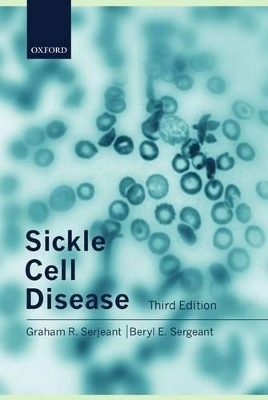
Sickle Cell Disease
Seiten
2001
|
3rd Revised edition
Oxford University Press (Verlag)
978-0-19-263036-0 (ISBN)
Oxford University Press (Verlag)
978-0-19-263036-0 (ISBN)
This new edition contains many new references and incorporates the latest thinking on the biology of the disease and the best practice in its management.
Sickle cell disease was recognized to have a molecular basis more than 50 years ago, since when knowledge of the pathophysiology of the disease has paralleled the developments of molecular biology. Characterized by a striking red cell deformity, a great deal has been learnt about the mechanisms involved and animal models developed over the last 10 years have contributed to these studies. Despite greater understanding of the molecular mechanisms, this knowledge has had little impact in improving management at the bedside. It is the authors' belief that much of importance remains to be learnt from clinical studies which ultimately may define the questions most relevant for our molecular colleagues to answer. Jamaica has provided a superb setting for clinical studies, which initially documented the extremely variable clinical course and then proceeded to seek the determinants in a Cohort Study based on newborn diagnosis and follow-up which has continued for the past 27 years. This new edition of Sickle Cell Disease reviews the history and many of the recent developments in laboratory studies but retains the perspective of a practising clinician. A critical appraisal of the available observations and evidence has sought to define the best practice in its management.
Sickle cell disease was recognized to have a molecular basis more than 50 years ago, since when knowledge of the pathophysiology of the disease has paralleled the developments of molecular biology. Characterized by a striking red cell deformity, a great deal has been learnt about the mechanisms involved and animal models developed over the last 10 years have contributed to these studies. Despite greater understanding of the molecular mechanisms, this knowledge has had little impact in improving management at the bedside. It is the authors' belief that much of importance remains to be learnt from clinical studies which ultimately may define the questions most relevant for our molecular colleagues to answer. Jamaica has provided a superb setting for clinical studies, which initially documented the extremely variable clinical course and then proceeded to seek the determinants in a Cohort Study based on newborn diagnosis and follow-up which has continued for the past 27 years. This new edition of Sickle Cell Disease reviews the history and many of the recent developments in laboratory studies but retains the perspective of a practising clinician. A critical appraisal of the available observations and evidence has sought to define the best practice in its management.
PART 1 GENERAL ASPECTS ; PART 2 SYSTEM REVIEW ; PART 3 COMPARISON OF SICKLE CELL SYNDROMES ; PART 4 MANAGEMENT ; PART 5 EPIDEMIOLOGY
| Erscheint lt. Verlag | 5.4.2001 |
|---|---|
| Zusatzinfo | numerous halftones and line illustrations |
| Verlagsort | Oxford |
| Sprache | englisch |
| Maße | 163 x 242 mm |
| Gewicht | 1286 g |
| Themenwelt | Medizinische Fachgebiete ► Innere Medizin ► Hämatologie |
| Studium ► 2. Studienabschnitt (Klinik) ► Pathologie | |
| ISBN-10 | 0-19-263036-9 / 0192630369 |
| ISBN-13 | 978-0-19-263036-0 / 9780192630360 |
| Zustand | Neuware |
| Haben Sie eine Frage zum Produkt? |
Mehr entdecken
aus dem Bereich
aus dem Bereich
Hämatologie und Internistische Onkologie
Buch | Softcover (2023)
ecomed-Storck GmbH (Verlag)
CHF 179,95
Buch | Softcover (2024)
Urban & Fischer in Elsevier (Verlag)
CHF 73,00
Buch | Softcover (2023)
Deutscher Ärzteverlag
CHF 41,95


